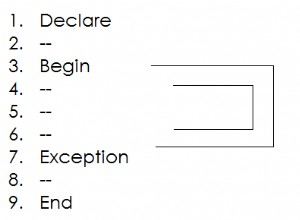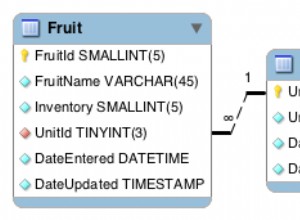Darò per scontato che ci sia almeno un record in sales_flat_order che soddisfa la condizione status != 'holded' e il cui customer_email è NULL .
(NOT) IN è notoriamente complicato con NULL s, ecco un esempio.
Considera la seguente query:
SELECT 1 WHERE 1 NOT IN (SELECT 2 UNION ALL SELECT 3)
Questo produce un record con valore 1 , come previsto.
Tuttavia, se lo modifichi in:
SELECT 1 WHERE 1 NOT IN (SELECT 2 UNION ALL SELECT NULL)
Quindi la query produce un set di risultati vuoto. Questo è un problema ben noto con (NOT) IN . Per questo motivo, dovresti generalmente evitare questa sintassi e utilizzare (NOT) EXISTS invece. La query precedente potrebbe essere riscritta come:
SELECT 1 a
FROM (SELECT 1 a) t1
WHERE NOT EXISTS (
SELECT 1
FROM (SELECT 2 a UNION ALL SELECT NULL) t2
WHERE t1.a = t2.a
)
Per la tua domanda:
SELECT customer_email
FROM sales_flat_order s
WHERE NOT EXISTS (
SELECT 1
FROM sales_flat_order s1
WHERE s1.customer_email = s.customer_email AND s.status != 'holded'
);




